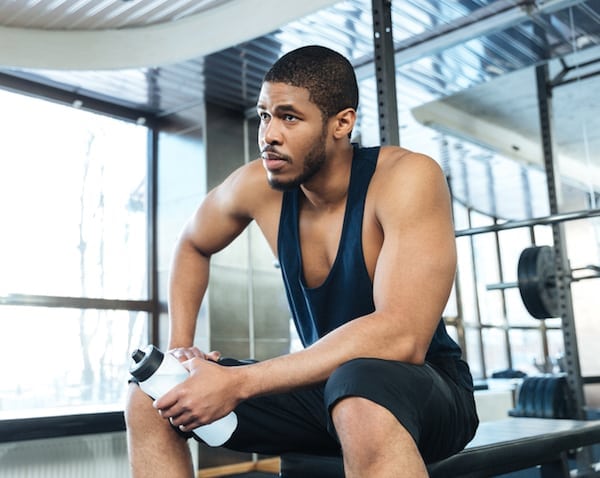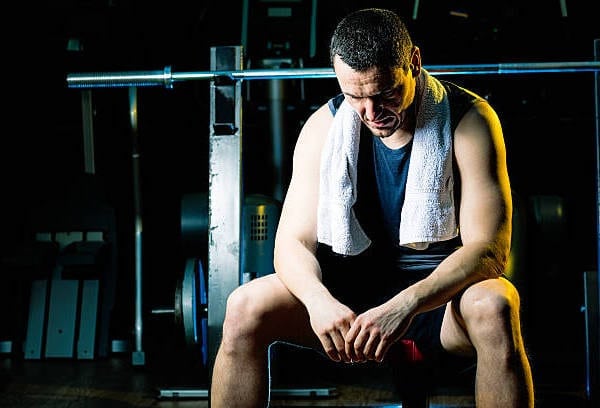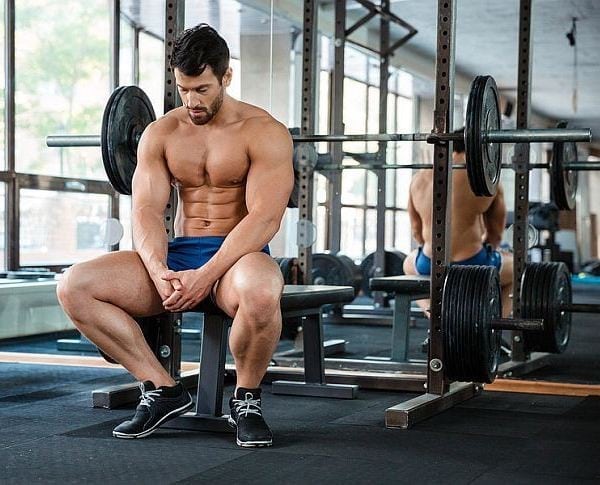No products in the cart.
How Long Should You Rest Between Sets?

One of the most underrated factors behind success in the gym is getting adequate rest between sets, some people use insanely long rest periods whilst others feel that any second spent not training is a second wasted.
But who’s right? Or better yet, could there be different situations where everyone is right?
The first thing that you need to do is establish what you’re trying to achieve, are you looking for fat-loss over everything? Maybe you want to improve your cardio, or your goal is to build bigger muscles, or become stronger, or both.
Each one of these goals has a different length of rest period that suits it and this article will look at what rest period suits each training goal.[toc]
Rest Periods for Strength Training

Training to build strength involves low reps and high reps, you are going for quality over quantity and building strength takes priority over everything else.
You are not looking to burn as many calories as possible, but you are looking to lift the heaviest weight that you can.
If you have any other goals in mind then you aren’t really training for strength.
This means that your rest periods should be long enough for you to fully recover from your last set, obviously you don’t want to be resting for so long that you lose focus and have to re-warm up. But a 45 second breather really isn’t going to work either.
A study in 2015 found that resting for a period of 3 minutes led to greater gains in strength in resistance trained men [1].
This extra rest will allow your muscles to recover from the previous set and your ATP (energy) will recuperate. This means that you will have more chance of lifting the same weight or heavier in the next set. Your muscles will respond to the new load and you will become stronger.
Taking a shorter rest would prevent you from recovering enough and your next set would suffer.
Rest Periods for Hypertrophy

Hypertrophy is the process of growing your muscles in size through resistance training.
There are actually two types of hypertrophy. Without going into too much detail there’s Sarcoplasmic hypertrophy and Myofibrillar hypertrophy.
The first type is the type of hypertrophy that you see in bodybuilders, where the muscles are huge but the bodybuilders themselves aren’t as strong as you might think.
The second type of hypertrophy (Myofibrillar) is the more dense type of muscle that you see in powerlifters and Olympic weightlifters. This type of hypertrophy comes with strength and is therefore suited to the 3 minute rest periods
But when we talk about hypertrophy in a general sense we are usually discussing Sarcoplasmic hypertrophy, in other words training specifically for muscle growth.
This type of training involves higher rep ranges (8-12) and also metabolic stress. Which is created by training at the very high rep ranges, or by using methods such as drop sets or back off sets.
Metabolic stress uses short rest periods to keep it at the right intensity, so when training for hypertrophy you should use short rest periods right?
Well hold on a sec! Most experts agree that the best way to train for hypertrophy is to use a variety of rep ranges, low rep ranges for Myofibrillar hypertrophy and higher rep ranges to increase metabolic stress, while traditionally the medium rep range (8-12 reps) has been associated with hypertrophy.
This means that for optimal hypertrophy you should have a wide range of different rep ranges within your program and that those rep ranges would benefit from different rest periods.
Rest Periods for Fat Loss

Truth is that training for strength and training for hypertrophy can both lead to fat loss, it’s all about diet. Create a calorie deficit, perform an activity that burns more calories and over time you will lose substantial body fat.
So this is a bit of a non-starter, when most people think that they are training for fat-loss what they are really training for is improved cardio. This doesn’t mean that they won’t burn calories (which can lead to fat-loss) but the exercises that they follow are not special fat-burners.
Instead of talking about fat loss then, we’ll talk about improving your cardiovascular fitness. In this case you would benefit from shorter rest periods of between 45 and 60 seconds.
Another training goal is to improve muscular endurance, so performing very high rep sets, for this you can have rest periods of between 20 seconds and 60 seconds.
The Bottom Line
This may sound like a cliché but when it comes to weight lifting you really should listen to your body.
When you are performing a set of 4 deadlifts at a weight that you’ve never attempted before it should be common sense to give yourself a bigger rest period, whatever your goals are.
By the same logic if you are training to increase metabolic stress then a 3 minute rest between sets is going to prevent that from occurring.
Save
